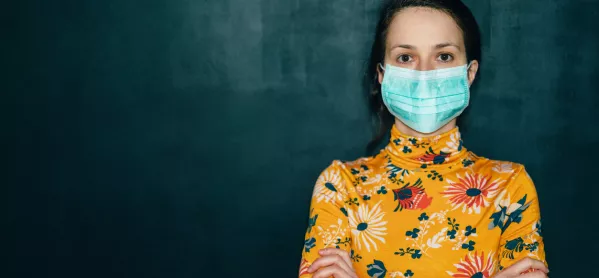Government guidance on reopening schools says that most staff will not need personal protective equipment (PPE), and admits that social distancing cannot be maintained with the youngest pupils who could return to school on 1 June.
“The majority of staff in education settings will not require PPE beyond what they would normally need for their work, even if they are not always able to maintain a distance of two metres from others,” the guidance says.
Coronavirus: Demand for rethink of ‘rushed’ school reopening plans
The plan: All primary pupils to be back in school before summer
Related: School reopening plan branded ‘reckless’
Opposition: Teachers give school reopening plans a ‘resounding no’
The guidance does include a range of other safety measures, including halving class sizes to groups of no more than 15 pupils.
But the guidance also acknowledges that young pupils will not be able to observe social distancing.
Coronavirus: DfE guidance for reopening schools
“We know that, unlike older children and adults, early years and primary age children cannot be expected to remain two metres apart from each other and staff. In deciding to bring more children back to early years and schools, we are taking this into account,” the Department for Education document says.
Because of this lack of social distancing schools should “work through” a “hierarchy of measures”:
- Avoiding contact with anyone with symptoms.
- Frequent hand cleaning and good respiratory hygiene practices.
- Regular cleaning of settings.
- Minimising contact and mixing.
“It is still important to reduce contact between people as much as possible, and we can achieve that and reduce transmission risk by ensuring children, young people and staff, where possible, only mix in a small, consistent group and that small group stays away from other people and groups,” the guidance adds.
It says that Public Health England “is clear” that if this advice is followed, “then the risk of transmission will be lowered”.
On PPE, it says this will only be required where pupils already require this for their own care, or by teachers of pupils become unwell with symptoms of coronavirus and need “direct personal care until they can return home”.
In the latter case, the guidance says: “A face mask should be worn by the supervising adult if a distance of two metres cannot be maintained.
“If contact with the child or young person is necessary, then gloves, an apron and a face mask should be worn by the supervising adult.
“If a risk assessment determines that there is a risk of splashing to the eyes, for example from coughing, spitting or vomiting, then eye protection should also be worn.”




